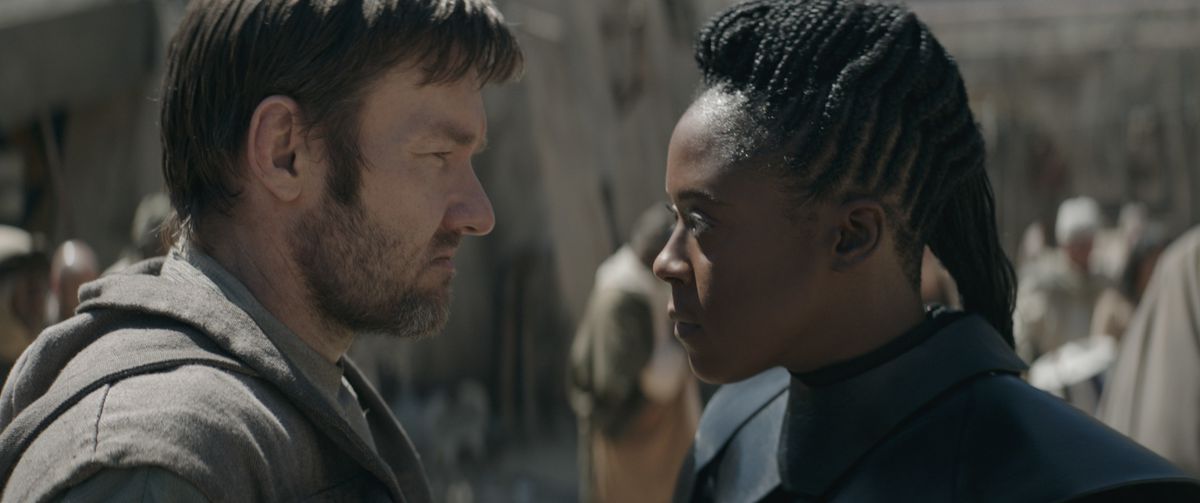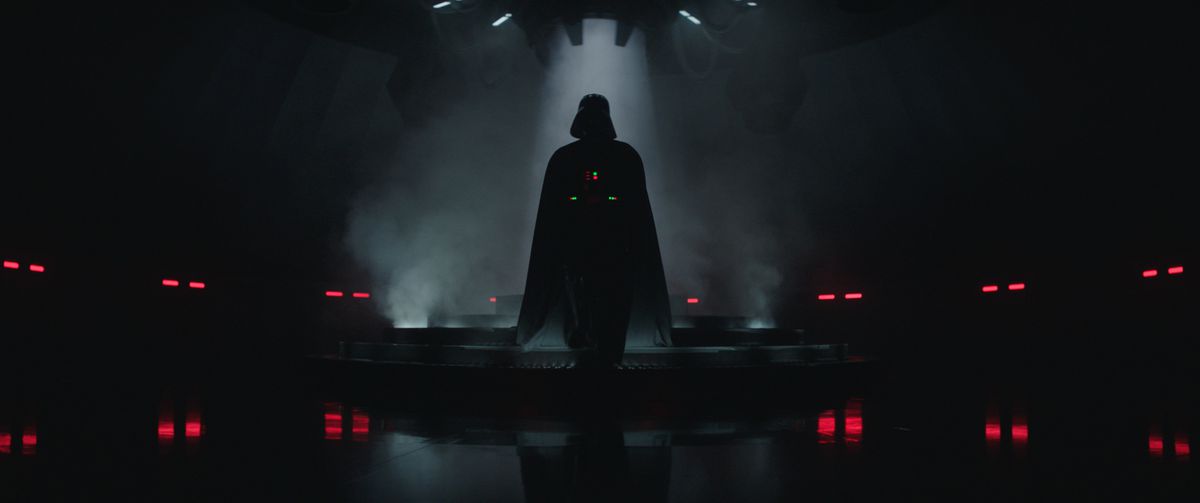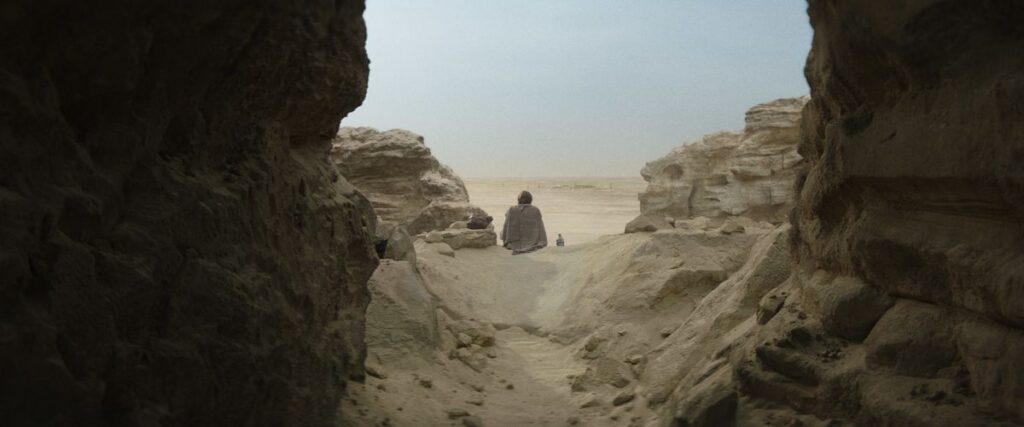For a franchise as huge as Star Wars, finding new ways to thrill audiences isn’t so much an obligation as it is smart business. Yet, for Lucasfilm and its parent company, Disney, keeping the nearly 50-year-old series feeling fresh has become a circuitous, Kessel Run kind of quagmire. What is truly the way: retroactively welding heretofore unrevealed story beats onto their lore, or exploring the uncharted cosmic expanses of this galaxy far, far away? Play the hits or gently remix them?
That brings us to Obi-Wan Kenobi, the latest in an ever-growing line of Star Wars television to find itself navigating this exact storytelling binary. Unlike The Mandalorian or The Book of Boba Fett (which featured blank-slate antihero types) Kenobi is hamstrung by the well-documented legend of its leading man, the eponymous exiled Jedi Knight (Ewan McGregor). Finding something new to say about a character we have already seen fight, fail, and die was always going to be the show’s biggest gamble, but Kenobi has kicked over the dejarik table and expanded on the space between episodes III and IV as far as it can go before it breaks the immutable laws of A New Hope.
One of the show’s biggest swings to date is the assertion that the last time Obi-Wan and his former apprentice (Hayden Christensen) crossed lightsabers was not, in fact, at the raging fire pits of Mustafar. Kenobi met Darth Vader for the first time since that fateful duel last week, and from the look of things they’ll be swinging sticks at each other again. And last week presented yet another distressing (and potentially story-breaking) addition to the Kenobi lore, a left-field reveal made by Old Ben himself, where Ewan McGregor wrinkled his weary brow at the cherubic Leia Organa (Vivien Lyra Blair) and uttered this potentially game-changing line: “I still have glimpses, flashes really… My mother’s shawl, my father’s hands. I remember a baby. […] I think I had a brother. Really don’t remember him. I wished I did.”
Photo: Disney
There is another. A little Kenobi brother. It could be nothing. A throwaway line. Or it could be the next 20 or so years’ worth of Star Wars stories. Who can say. (Listen, as absurd as it sounds, a tiny, chaotic part of myself prays to the dark angel it worships that Disney just goes for it and produces Baby Kenobi Adventures.)
If this line is meant to bear storytelling fruit, then Lucasfilm’s ambitions to turn Obi-Wan Kenobi, a co-lead of the prequel trilogy and a supporting mentor figure from the OT, into a legacy character have been secured. (And the Rey Kenobi theorists shall continue to lament.) And if it is a signal that neo-Kenobi stories are on their way, then it should be asked: Does this further the Star Wars saga in any substantial way? Beyond the financial incentives to introduce another sandy-haired Scot with a winning smile into the saga, how does this inform the character of Obi-Wan Kenobi? Does this help him or hurt him?
History might provide an answer. A long time ago, the original screenplay for The Return of the Jedi contained a tantalizing Obi-morsel: The Jedi hermit did have a brother, and his name was Owen Lars (once Phil Brown, now Joel Edgerton). This wild story beat was wisely jettisoned from the film’s final cut (after all, what could it have possibly added to the emotional stakes of Episode VI?) but it lived on in the film’s 1983 novelization by James Kahn. It might have been a seemingly harmless line — “Your mother and I knew [Vader] would find out eventually, but we wanted to keep you both as safe as possible, for as long as possible […] [so] I took you to live with my brother Owen, on Tatooine…” — but it whipped up a canonical mess, and has since been consigned to the Star Wars Legends scrapheap.
For a time, however, this soap operatic Kenobi family reveal was repeated again and again: It merited mention in the 1995 Star Wars Customizable Card Game, and Obi-Wan’s dreams of a brother named Owen found a home in a 1999 novel titled Jedi Apprentice: The Hidden Past. A dozen years later, Abel G. Peña would retcon the whole long-lost Kenobi kerfuffle in a Star Wars short story titled “Lone Wolf: A Tale of Obi-Wan and Luke.” There, grateful readers would discover that Obi-Wan’s visions of Owen Lars came from his post-Clone Wars future, not his distant past, effectively removing the burden of legacy from Obi-Wan’s shoulders and allowing the character to freely mature into the older-brother role in Anakin Skywalker’s life.

Photo: Disney

Photo: Disney
So Kenobi has reintroduced this dusty legacy trope, and it’s worth exploring, not just to establish what we know about Obi-Wan’s familial history but to consider what it adds to the character — or doesn’t. We know that he at least had a father and a mother, and that his home world is called Stewjon. (And if that name sounds ridiculous even by Star Wars standards, know that “Stewjon” is a blend of comedian Jon Stewart’s name, made up on the fly by George Lucas himself during an on-air interview with the former Daily Show host. Totally serious.) More crucially, there are at least two more things we know about Obi-Wan Kenobi.
We know that Obi-Wan held his Jedi mentor, Qui-Gon Jinn (Liam Neeson) in high esteem. We also know Ben’s continued spiritual pursuit of his fallen Master, first introduced at the very end of Revenge of the Sith, is meant to explain Ben’s sudden physical dissipation upon his death during that deadly reunion with Vader in A New Hope. But it’s also a clear indicator of how Qui-Gon fits in Obi-Wan’s life; more than a teacher, Qui-Gon was a father. The man who sired Ben on Stewjon no longer matters. We don’t even know his name. But we know who Qui-Gon was. We were there with Obi-Wan the day he died. And if Ben is finally reunited with Qui-Gon in the latter half of Kenobi, we’ll be there, too.
We also know who Anakin Skywalker is and what he meant to Obi-Wan: how things were when they first met (“The boy is dangerous,” Obi once said to his Master); how they clashed during Anakin’s formative years; how chance and war forged something powerful between these two Jedi Knights; and how eons of trust and reliance ultimately resulted in betrayal. The rupture between Anakin and Obi-Wan left behind the kind of devastation that can only be felt by those who were family and are now family no more.
As for Obi-Wan Kenobi’s family, we know the things that matter. We know that the Jedi practice takes children away from their families and that those children grow to become heroes, or villains. Their stories are great, not because of the minutiae of their lives, but by their deeds and their failures. Star Wars is grand opera, and miring in the minute details of titanic figures such as Obi-Wan Kenobi only dilutes their potency. Take Rey: Did becoming a Skywalker define who she was or what she accomplished? No way. Would being a Kenobi have made her story richer? Absolutely not. So what does knowing Obi-Wan had a younger brother do for his story, other than clumsily imbuing the nature of his brotherhood with Anakin Skywalker with additional meaning?
For now, Obi-Wan’s memories of his kid brother are just that. How much emotion and meaning we’re supposed to glean from this line remains to be seen, but there is cause for wariness; history has proven that when it’s applied haphazardly, any expansion in the Star Wars canon can easily become a bug, not a feature. (Hello, Solo.) The limits of the Skywalker saga have finally been reached, yet Luke, Leia, and their cyborg-fascist old man still loom over all. Where does Star Wars go from here? It seems that, for right now at least, Lucasfilm and Disney believe that if this saga is going to have anything to offer in the generations to come, then every character in its orbit will have to contribute their own unique worth to the cause. Legacy in perpetuity.

